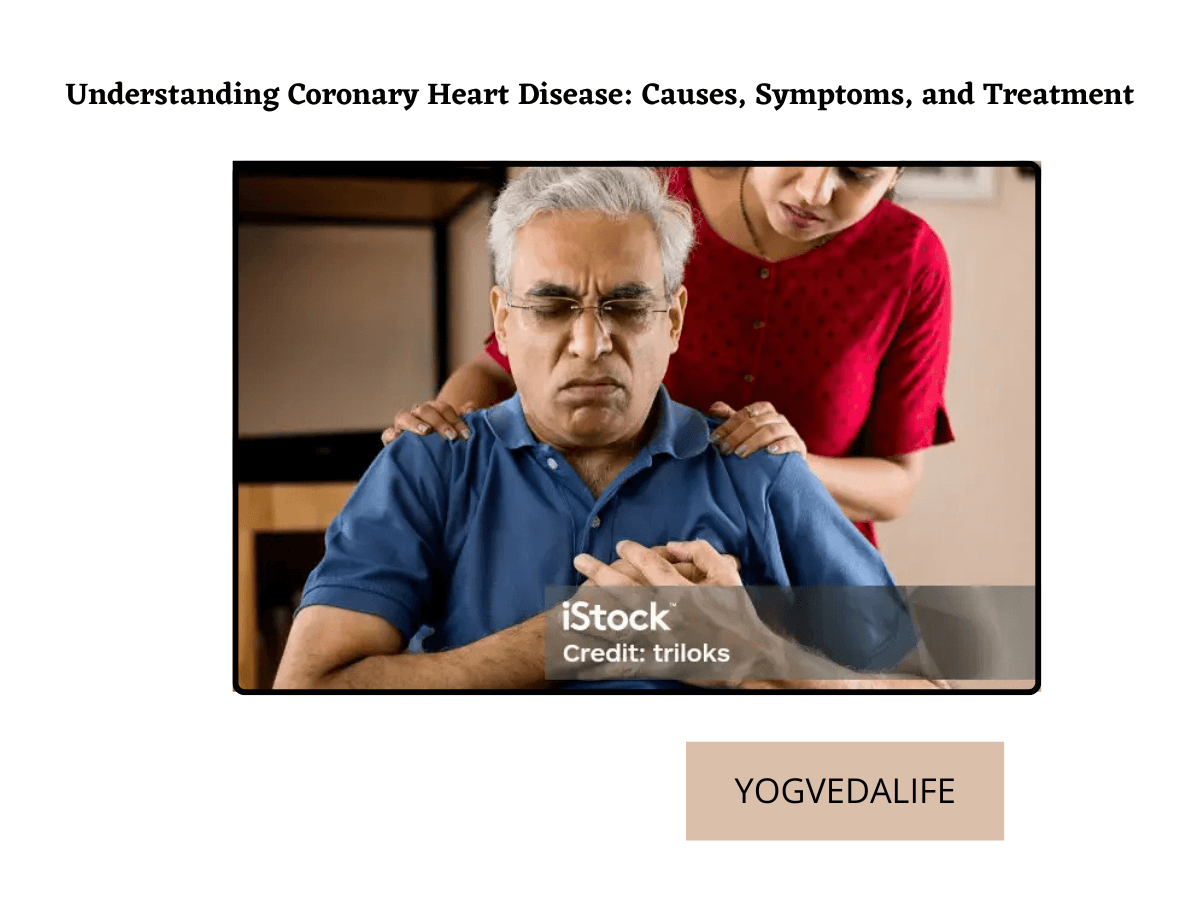Coronary Heart Disease (CHD), also known as Coronary Artery Disease (CAD), is a leading cause of morbidity and mortality worldwide. CHD occurs when the coronary arteries, which supply oxygen-rich blood to the heart muscle, become narrowed or blocked due to atherosclerosis, leading to reduced blood flow and oxygen delivery. This can result in angina, heart attacks, and even sudden death. With the increasing prevalence of risk factors such as hypertension, diabetes, obesity, and smoking, CHD has become a major public health concern, affecting millions of people globally. Understanding the causes, symptoms, and prevention strategies is crucial for mitigating the impact of CHD. You will understand Coronary Heart Disease: Causes, Symptoms, and Treatment below.
What is Coronary Heart disease (CHD)?
Contaminated doshas enter the heart, causing a defect in the rasa dhatu and blockage of the heart’s arteries. In Ayurveda, CHD is considered a disorder of the heart and circulation, related to imbalances in the three doshas (Vata, Pitta, Kapha). The condition is known as “Hridroga” or “Hridaya Roga.

CAUSE
- Ayurveda considers distorted diet and lifestyle as the cause of heart disease.
- Physical/mental stress.
- Eating again before the food consumed has been digested.
- Holding unsustainable velocities.
WHAT ARE THE SYMPTOMS?
- Difficulty in breathing.
- Distortion of body complexion.
- Nausea.
- Having pain in the chest.
TREATMENT ACCORDING TO AYURVEDA-
Ayurvedic treatment depends on the affected dosha(VATA, PITTA, AND KAPHA). Generally, the following treatments are as follows:
a) Fasting (langhana)
b) Panchakarma procedures such as vomiting and defecation.
c) Symptomatic treatment with anti-sedative and anti-inflammatory medicines like Pushkarmool and Guggulu is also beneficial.

Ayurvedic Treatment Principles for CHD:
- Correction of digestive impairments
- Reduction of meda dhatu (fat tissue)
- Improvement of blood circulation
- Strengthening of the heart
- Balance of doshas
Compatible Diet –
- Old rice, green gram dal, kulcha dal, pumpkin, ginger, garlic, onion, and jaggery.
- Pomegranate, grapes, coconut, etc.
- Meditation and regular yoga practice.
Incompatible Diet
- Avoid opposing foods like fish and curd, banana and milk, etc.
- Don’t adopt a luxurious lifestyle.
- Do not be angry, worried, or afraid.
- Do not assume unsustainable velocities.

SYMPTOMS
- Angina may feel like pressure or squeezing in your chest.
- You may also feel it in your shoulders, arms, neck, jaw, or back.
- Angina pain may even feel like indigestion.
- The pain tends to get worse with activity and go away with rest.
- Emotional stress can also trigger the pain.
- Another common symptom of CHD is shortness of breath.

DIAGNOSIS
- ECG, EEG, TMT, X-ray, Lipid profile, coronary angiography.
- Junctional Depression
- Upsloping ST depression (1.5 mm of 80 msec)
PRINCIPLE OF TREATMENT
- Panchakarma
- Snehapana
- Bhapa Sveda (steam bath)
- Virechana-Trivrit Leha 20-30gm with Gandharvahastadi tail 30ml with warm milk (defecation)
- Hridya Basti with Mahanarayana Taila
- Shirodhara-Himasagara taila
Drug of Choice: Arjuna
Main Drugs: Pushkaramoola, Karaveera, Shilajatu, Nagabala, Dadima, Amalaki

Recommended Yoga Therapy
- Pranayama
- Rhythmic breathing
- Shavasana and Yoganidra
- Ardhachakrasana
- Tadasana
- Vajrasana
- Anuloma Viloma Deep Breathing (15 minutes)
- Sheetali Puraka followed by Bhramari Rechak (21 rounds)
CONTRAINDICATION-
- Surya Namaskar
- Sarwangasana
- Halasana
- Shirshasana (Headstand) and its variations.
- Fast breathing.
- Right nostril breathing.

In conclusion, Coronary Heart Disease is a complex and multifaceted condition that requires a comprehensive approach to prevention, diagnosis, and management. By adopting healthy lifestyle habits, managing risk factors, and seeking timely medical attention, individuals can significantly reduce their risk of developing CHD. Furthermore, advancements in medical treatments and interventions, such as angioplasty and stenting, have improved outcomes for those affected. However, continued research and awareness efforts are necessary to address the growing burden of CHD. By working together, healthcare professionals, policymakers, and individuals can help prevent, detect, and treat CHD, ultimately reducing the toll of this debilitating disease on individuals, families, and communities worldwide.
ALSO- https://yogvedalife.com/ayurvedic-way-to-promote-a-healthy-life/


[…] ALSO- https://yogvedalife.com/understanding-coronary-heart-disease-causes-symptoms-and-treatment/ […]